The month of March marks a great victory for Tanzania and Africa as a whole in the fight for economic development, at the center of which is the fight for universal access to electricity. The imminent activation of the new Julius Nyerere Hydroelectric Power Project (JNHPP), one of Tanzania’s major infrastructure projects, will increase the nation’s electricity provision capacity by almost 150%.
Electricity from the JNHPP’s first of 9 turbines is scheduled to enter the national grid any week now, with the second turbine to come on line soon afterward. Automatic start-up and shut-down tests have been underway over December and January for the hook-up and all other operational features. The reservoir behind the dam, filling since 2022, will ultimately store about 34 billion cubic meters of water.
The JNHPP’s installed capacity of 2.115 gigawatts will increase Tanzania’s electricity capacity from 1.6 gigawatts to more than 3.7 gigawatts, allowing the country to provide universal access to electricity, producing 5,920-gigawatt hours of power annually. At present, only 40% of the population has access, and outages of electricity are recurrent, even for those with access. The new volume of electricity will power industry, agriculture, schools, and healthcare centres.
Built across the Rufiji River—Tanzania’s largest—and under construction since 2019, the JNHPP is the ninth-largest hydroelectric dam in the world and the fourth-largest in Africa. The project’s construction provided employment for 8,000 Tanzanians as well as 1,000 Egyptians and other foreign workers. Built at the cost of $2.9 billion, the dam is 1,025 meters long. Once in operation, in addition to its massive electricity production, this project will control flooding and improve agricultural productivity.
A Pan-African Project
The JNHPP adds another to recent African victories. As this article will show, the project was under international attack and virtually blacklisted from receiving any financing from the World Bank and Western financial institutions on objections to its being built in the Selous Game Reserve and the curious and obviously Malthusian argument that there was not sufficient demand for electricity, despite the 30 million Tanzanians with no access to electricity.
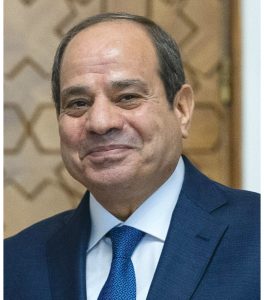
This substantial hurdle was overcome through direct negotiation between Tanzania’s then-President, the late John Magufuli, and Egypt’s President, Abdel Fattah El Sisi. The latter enthusiastically offered a Pan-African solution. Thus, the Egyptian government-owned civil engineering company, Arab Contractors, and the privately owned Egyptian multi-national Elsewedy Electric took on the project.
Since Africa does not yet produce turbine generators, the nine turbines were supplied and installed by the Chinese state-owned Dongfang Electric Corporation (which supplied the generator sets for China’s famous Three Gorges Dam). TEBA Company of China built the transformer substation that will integrate the power from the JNHPP into the grid.
Financing for the project was handled through the Tanzanian state budget with loans from the African Export-Import Bank and Tanzanian financial institutions. It will be owned and operated by the government’s Tanzania Electric Supply Company Limited (TANESCO).
Egypt’s role extends beyond the JNHPP itself to supplying the equipment necessary for expanding Tanzania’s electricity grid nationwide. Egypt is building the capacity to export such equipment to other African countries, expanding its national grids as it strives for full electrification. Elsewedy Industrial Development (SD), a subsidiary of Elsewedy Electric, is building the Elsewedy Industrial City (EIC) in Kibaha, Tanzania, near the Indian Ocean coast, 169 km northeast of the JNHPP.
At its core, the complex will include factories to produce transformers, cables, wires, PVC, and meters—everything required to bring electricity to the entire country as well as the rest of Africa. The project intends to attract $400 million in investments and eventually employ 50,000 people.
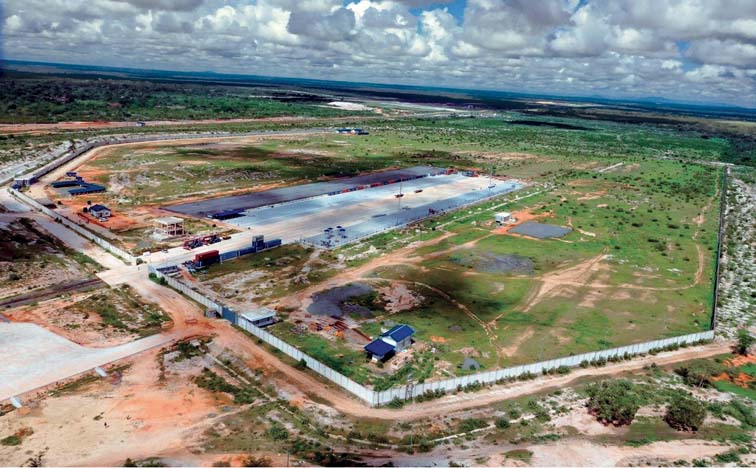
The 20-hectare Kwala Dry Port, being built to facilitate economic development and boost trade with Zambia, is located 15 km from Elsewedy Industrial City and Industrial Complex, also now under construction.
Located 15 km from the Kwala Dry Port, where the government is building a new satellite city and industrial complex, EIC will be a new city with all the amenities. The location also lies along the new Standard Gauge Railway, giving EIC direct access to Dar es Salaam, the country’s commercial center and largest city. When completed, the railway will be some 2,000 km long and serve as a development corridor that will connect Dar es Salaam on the Indian Ocean to Burundi and Rwanda, where railways will eventually interconnect with the Democratic Republic of the Congo.
Very informative videos of the project can be found on the Arab Contractors website.
READ RELATED: The Julius Nyerere Hydropower Project is Now 90% Complete While Conserving the Environment – What Should We Expect Next?
Tanzania’s Fight Against the Malthusian
The JNHPP was conceived as soon as Tanzania gained its independence in December 1963. Had it been built in the 1960s, Tanzania could have joined Egypt and Ghana, which in the same era built the transformative Aswan Dam on the Nile and Akosombo Dam on the Volta River, giving those two countries their first major boost in electricity and water management. The primary failure to build the dam was due not only to a lack of resources but also to the mobilization of the environmentalist movement in the service of a Malthusian policy of denying Africa the human right to economic development.
The dam’s intended location within the Selous Game Reserve, a UNESCO World Heritage Site, was used as a battering ram to sabotage the project. A pseudo-environmentalist mobilization was aimed at sabotaging all large dam projects, dovetailing with harsh IMF structural reforms denying Africa the credit it needed for development. This same campaign has been rolled into the fake CO2 climate policy that seeks to lock up hundreds of thousands of square kilometers throughout Africa, a continent that already has the largest protected areas on the planet while producing only 3% of the world’s CO2.
Compare Tanzania with France. France has a population of 67 million, comparable to Tanzania’s 63 million. The average yearly salary in France is €41,000; in Tanzania, it is €7,000 (equivalent). The land area of France is 643,800 km² (551,500 for Metropolitan France, the portion within Europe); Tanzania’s is 945,000. France has an installed electricity capacity of some 60 gigawatts; Tanzania has 1.6 gigawatts, which will increase by another 2.2 gigawatts when the JNHPP goes online. The country will need much more over the next decade.
Egypt, a country of almost 110 million people, offers another useful comparison. A decade ago, when Egypt launched its very ambitious industrial development policy, it was suffering from a severe shortage of electricity. Since then, it has dramatically increased its capacity, from 36 gigawatts in 2015 to more than 59 gigawatts as of 2022. It is now an electricity exporter, mainly to Jordan and Libya. Half of the increase was created by one combined gas turbine power station of 14.5 gigawatts built by Siemens.
As for national parks, France has 26,168 km² of national parks, but half of that is taken up by the Guiana Amazonian Park in French Guiana. By contrast, Tanzania’s national parks cover an area of 99,306 km², approximately the land area of all the Benelux countries plus Switzerland.
Adding up all protected areas and national forests, where hunting and logging are strictly controlled, if not forbidden, the area increases to 361,594 km², more than a third of the land area of the country and larger than the entire land area of Germany! In addition to the Selous Game Reserve, there are 21 other national parks, including the famous Serengeti National Park, which covers 14,763 km² (more famous but much smaller than Selous).
The Genocidal Game Reserve
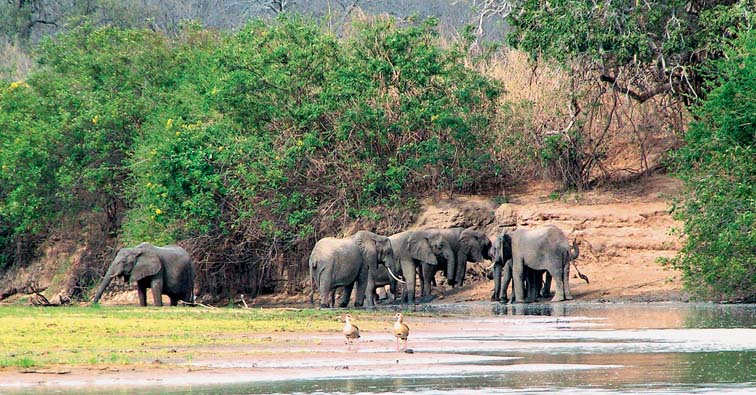
The public relations image of the 50,000-km2 Selous Game Reserve as a “pristine natural habitat untouched by human hands” is a terrible lie. The reserve was created through a conscious policy of genocide against the ancestors of today’s Tanzanians who lived in the region.
The genocide began when the region became part of the hinterland of the Arab trading colony and later the British protectorate and colony of Zanzibar, which hosted the most notorious slave market in the East African Indian Ocean slave trade, which expanded with the advent of the Portuguese, French, British, and other colonial powers. An estimated 40,000–50,000 human beings were sold into slavery annually in this market and exported as cargo.
While in 1833, the Parliament of the UK passed an act making the purchase or ownership of slaves illegal in most parts of the British Empire, the small print indicated that it would be gradual with the exception of “the Territories in possession of the East India Company,” Ceylon (now Sri Lanka) and Saint Helena. It was not until 1873 that the British, who by then had turned Zanzibar into a virtual protectorate, closed down the slave trade. Make no mistake—this was not for pure, altruistic reasons; the British needed this manpower, which was being exported out of Africa, for working on the plantations they were creating in their African colonies, and found it more efficient to enslave entire nations.
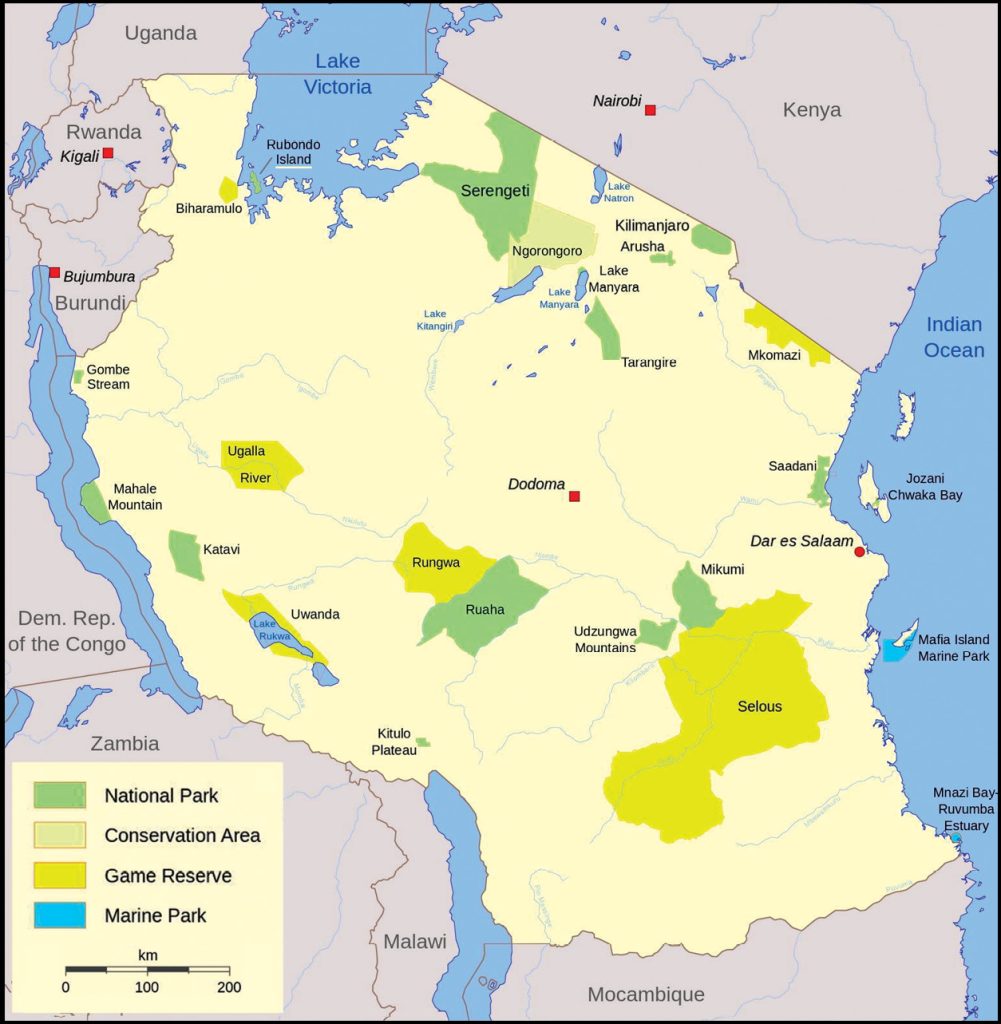
When Germany grabbed what is now Tanzania, Rwanda, and Burundi as their East African Empire in the 1880s, the genocide continued. While Germany abolished slavery in 1905, it nonetheless forced the local population to grow cotton for export, a policy that induced not only oppression but famine, as the population was forced to grow cotton instead of food. This led to the Maji Maji Rebellion (1905–1907) in southern Tanzania. The Germans responded with a policy of genocide, burning villages and crops and indiscriminately killing. As many as 300,000 perished, mostly from the famine induced by the “pacification” campaign.
In 1896, the German colonial government designated the area now called the Selous Game Reserve as an area to be “protected.” As we have seen, that “protection” did not extend to the human species. In 1905, in the midst of the Maji Maji Rebellion, it was organized into a hunting reserve for the European elite. With the advent of World War I, it became a battlefield between the British and the Germans, “thinning out” the local population even further.
After the war, the British took over the colony as a “protectorate” and named the reserve after Frederick C. Selous, an English big game hunter who had died fighting the Germans. Having killed some 106 elephants in his career, Selous was also a good friend and sometime business partner of Cecil Rhodes and collaborated with the latter in creating the Colony of Rhodesia (now Zimbabwe). He also organized hunting expeditions for U.S. President Theodore Roosevelt.
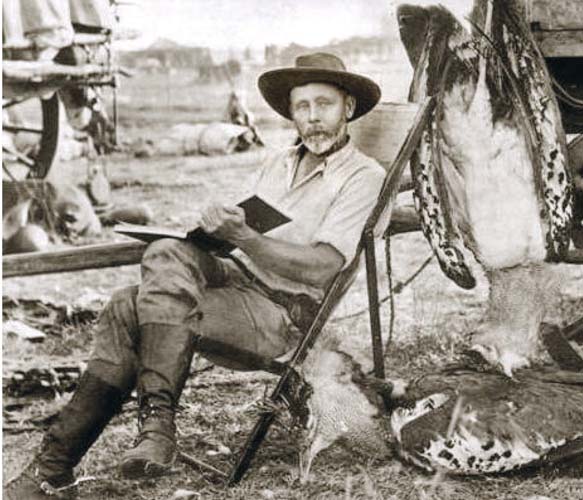
The English big game hunter, Frederick Courtenay Selous (1851-1917), after whom the Selous Game Reserve is named. Here he is on safari, in the 1890s.
The genocide still did not end with the German withdrawal. One species in the region which is “protected” is the woodland Tsetse fly, which happens to carry the parasitic bovine trypanosomiasis, which transmits Trypanosomes, the cause of the dreaded sleeping sickness. In 1945, an epidemic of the disease led to a mass evacuation of the Wangindo people, who inhabited the region contiguous to the reserve. That region was then attached to the reserve so the Wangindo could not return to their homes.
Today, the only inhabitants are a few thousand transient tourists, those operating the hunting lodges and camps, and game wardens.
The Fight for Development:
A TVA for Tanzania
The spectacular success of the Tennessee Valley Authority, created under President Franklin D. Roosevelt in the midst of the U.S. economic depression of the 1930s and covering an area of 80,000 km², became the positive model for the post-colonial nations of Africa and Asia.
The Rufiji River and a proposed dam at Stiegler’s Gorge attracted the attention of both German and British colonizers but were never realized. The gorge, now the site of the JNHPP in the northern section of the Selous Game Reserve, was named after German engineer Franz Stiegler, who was killed by an elephant while hunting in the reserve in 1908.
In the 1950s, The United Nations Food and Agriculture Organization conducted the first survey of the Rufiji River Basin, at the time under the British colonial administration, under a UN declaration in 1956 that “River basin development is now recognized as an essential feature of economic development.”
Completed in 1961, the year of Tanzania’s independence, the survey recommended the development of the entire Rufiji Basin, with a multi-purpose dam at Stiegler’s Gorge and the irrigation of 200,000 hectares of agricultural land in the lower basin.
In 1967, the U.S. Agency for International Development sent a team of engineers from the U.S. Bureau of Reclamation to conduct a survey and draft a plan, not just for the Rufiji River basin but for all of Tanzania. They recommended the creation of a National Water Resource Council to oversee all river basins across the country. Viewing the Rufiji River as the most promising site for a TVA-type project, they called for the creation of a Rufiji River Authority as an independent agency based on the TVA model.
Kaiser Engineers International, Inc., an arm of the American company, Kaiser Aluminum Corporation, also drafted a proposal. Kaiser had been directly involved in Ghana’s Akosombo Dam as well as the Hoover and Grand Coulee dams in the United States. The proposal called for an entire integrated agro-industrial development policy for the region which would fit into President Julius Nyerere’s concept of socialist development.
Unfortunately, the expansion of the Vietnam War and lack of resources prevented the U.S. from following through with the project. By the 1970s, the Norwegian Agency for Development Cooperation was contracted and came up with similar recommendations, producing detailed feasibility and design studies. All failed because of the advent of the Third World debt crisis, the International Monetary Fund’s structural reforms, and the so-called Washington Consensus.
As noted above, in the 1980s, the World Bank refused to finance the project on the invidious claim that there was no great demand for electricity in a country where the vast majority of the population had no electricity. By the 1990s, the World Bank had stopped financing large dam projects anywhere in the world.
In 1982, the Selous Game Reserve was named a UNESCO World Heritage Site in an effort to bury the Stiegler Gorge Dam project forever. Or so the Malthusians hoped.
The pseudo-environmentalist movement, led by the World Wildlife Fund, financed by oligarchical financial interests such as the Rockefeller Foundation, put “conservation” window dressing on their Malthusian policies. They put up the now familiar bogus arguments: Besides the flora and fauna that would supposedly be in danger, they brought up the Malthusian claim that such a dam would destroy the livelihood of 150,000 farmers in the lower basin, because the dam would reduce flooding that brings silt which, they claim, is necessary to fertilize the crops.
While the floods may indeed bring silt, they also bring massive destruction in 7- and 50-year cycles. The huge floods of 1968 and 2002 caused vast destruction, and in some cases, the waters did not recede for many weeks, destroying crops and leaving thousands homeless.
The silt may add fertility, but the typical rice yields per hectare in the Rufiji Basin are between 0.5 to 1.5 tons per hectare—among the lowest yields for rice in the world due to the lack of flood control, irrigation, and ability of the farmers to afford sufficient fertilizer. This compares with countries such as the U.S. and Japan, where rice farming is fully mechanized, irrigated, and fertilized, producing yields of up to 10 tons per hectare.
Of course, these vigilant environmentalists make no mention of the fact that, while 150,000 farmers might have to change their agricultural methods (with the prospect of vastly improved yields), more than 30 million Tanzanians will soon have electricity. Nor do the environmentalists acknowledge that young people are at present leaving these farms, and heading to the cities in search of a better future.
Adopting the Chinese Model
By the beginning of the 21st Century, after two decades of economic stagnation, Tanzania’s government began to adopt an infrastructure-driven development policy based on goals for a dramatic expansion of electrification, connectivity via high-quality roads, a standard-gauge rail network, and state-of-the-art seaports to integrate the country internally, regionally, and globally. In 2004, the government adopted the Integrated Industrial Development Strategy 2025, which had as its target the transformation of the nation into a middle-income country by 2025. With the election of Jakaya Kikwete as President (2005–2015), these infrastructure projects began moving forward.
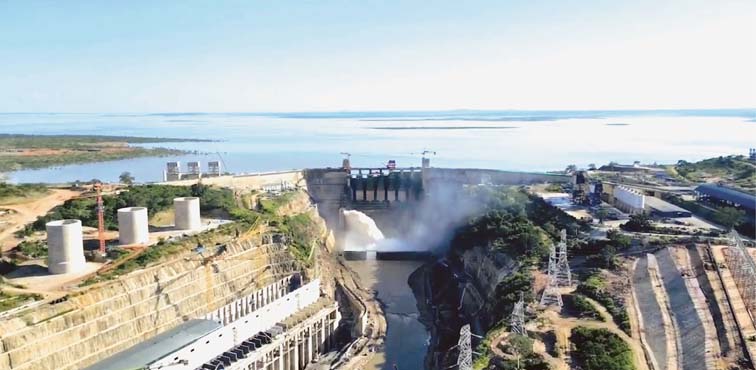
Tanzania’s Julius Nyerere Hydropower Plant and Dam, built by a consortium of Egyptian companies. Turbine No. 9 was the first to be switched on, on Feb. 25.
The policy was carried out even more vigorously by Kikwete’s successor, John Magufuli (2015–2021), nicknamed “the Bulldozer,” who had a fully dirigistic approach to developing the country. Following his death in 2021, the current President, Samia Suluhu Hassan, has been faithfully carrying on with the policy, not only following through with the JNHPP but also calling for the construction of a 50 km Tanzania-Zanzibar Island bridge, which will be the longest in Africa and the second-longest in the world. In the last decade, the country has enjoyed annual growth rates of over 6% and is now considered a lower-middle-income country.
Seeing that there could be no economic development without cheap electricity, President Kikwete in 2005 resurrected Stiegler’s Gorge Dam project, and the government began the search for civil engineering firms that would build it on a private basis. While bids were made by South African and Canadian companies as well as China’s Sinohydro, the Brazilian Odebrecht company made the most attractive offer. Odebrecht, Brazil’s largest civil engineering company, offered to finance and build the project and be repaid through the sale of electricity.
The project was also endorsed by Brazilian President Lula da Silva during his first term as President (2003–2010). Lula visited Tanzania in 2010 for meetings with President Jakaya Kikwete as part of Lula’s effort to promote economic and political cooperation between Africa and Brazil.
While Odebrecht executed detailed plans, all came to nothing as both Lula and Odebrecht were targeted through the so-called Lava Jato scandal (Operation Car Wash), while the U.S. Department of Justice targeted Odebrecht under the Foreign Corrupt Practices Act. Lula soon went to prison, and Odebrecht went bankrupt. The project stalled again.
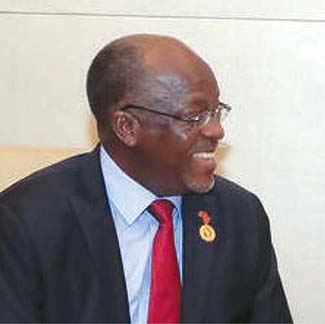
John Pombe Joseph Magufuli, President of Tanzania (2015-2021), pursued a fully dirigistic approach to developing his country.
DON’T MISS OUT: Why Should Tanzania Celebrate the Staggering Achievements on Hydroelectric Power (JNHPP) in Rufiji River?
John Magufuli entered the Presidency in 2015, determined to build the dam—World Bank and the World Wildlife Fund be damned. In 2017, Magufuli announced that the project would be a fully government-owned enterprise and financed out of the government budget. When the initial tenders failed in 2018, Magufuli held a meeting with Egyptian President Abdel Fattah El Sisi, who enthusiastically supported the idea.
El Sisi was already leading a major economic development program for Egypt, precisely on the same infrastructure-driven approach. In 2018, the Egyptian company Arab Contractors took on the contract to build the dam, and the electrical engineering company El Sewedy became responsible for the project’s electrical engineering. China’s Dongfang Electric Co. would supply the generator sets as well as the 27 transformers.
El Sisi declared the project one of Egypt’s most important undertakings, demonstrating his commitment to aid the countries of the Nile basin in their quest for development and regional integration, putting the prestige of his presidency behind the project.
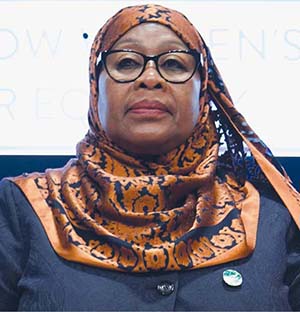
Samia Suluhu Hassan, President of Tanzania since 2021, has faithfully carried out Magufuli’s economic development policy.
The environmentalists nonetheless made a last-ditch attempt to undercut the Tanzanian government. As the JNHPP got underway, the Environmental Investigation Agency (EIA), a private, non-governmental organization (NGO) based in London and Washington, D.C., formally called on UNESCO to delist the Selous Game Reserve as a World Heritage Site. This was a blatant manoeuvre against the Tanzanian government, under which, in 2019, the Selous Game Reserve was reorganized.
It was divided into the northern part (the 30,000 km2 Julius Nyerere National Park), where the dam project was being built, and a southern part (the Selous Game Reserve), which was reduced from 50,000 km2 to 44,000 km2 while, in net, increasing the actual “protected” area.
UNESCO’s Director-General Audrey Azoulay, on the side of the EIA, claimed, “We’re concerned that a decision to go forward with the construction of the Stiegler’s dam is likely to have a devastating and irreversible impact on Selous’ unique ecosystem….” But in July 2021, UNESCO formally stood down in the face of strong arguments against the Selous delisting from not only the Tanzanian government but also from African delegations on UNESCO’s World Heritage Committee, including from Ethiopia, Mali, Nigeria, South Africa, and Uganda, who were adamantly in support of development, most of whom host very large dams in their own countries.
EIA receives funding from mostly European governments and private sources. Co-founder Jennifer Lonsdale, in 2016, received the Order of the British Empire from then Prince, now King Charles III. Lonsdale may have her knighthood, but far more importantly, Tanzanians will finally have electricity.

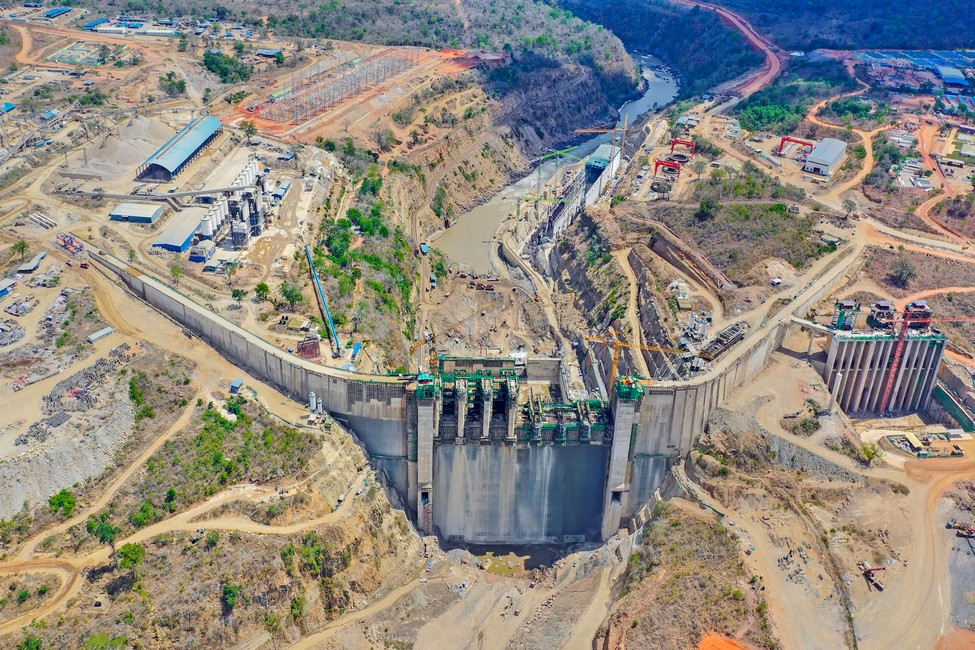
My problem of this kind of reportage has always been lack of consideration to the threats.
The picture painted here is just too good to be true! Where silting has been mentioned but has not been quantified with real figures.
Desilting of similar dams such Mtera and Kidatu and why they are underperforming should have offered lessons.
Experience has shown because of poor agricultural practices in Tanzania silting of dams lower the effective depth needed for harvesting the electricity.
Upstream irrigation is also limiting water available in the dam.
Then there are vagaries of weather amd over-dependence on rain to power our country.
And, hoping to export this little electricity is in itself curious.
The colonial angle was unnecessary to say the least!